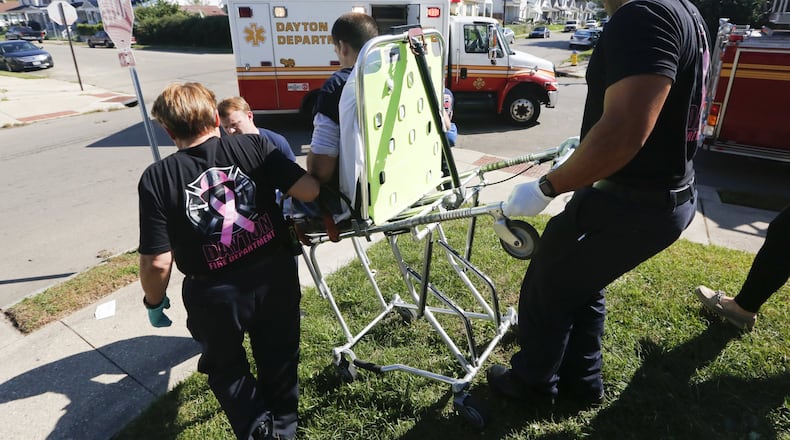The centrally-located facility — that would house patients generally less than 24 hours — could treat a number of overdose patients with no other health risks, Bucklew said Tuesday at a Community Overdose Action Team (COAT) steering committee meeting.
RELATED: County surpasses 2016 fatal overdose total before June
“The thought would be, if there’s no other medical condition associated with their situation, they would directly go to this detox/crisis stabilization unit,” Bucklew said. “Instead of just going to the emergency room where they may not need emergency room services — the highest cost, least efficient way to provide care — this would be a dedicated facility for people in crisis for substance abuse and detox.”
More than 13 percent, or 2,565, of all Ohio drug overdoses treated in emergency rooms through June of this year were in Montgomery County hospitals, according to state health statistics. Butler County, Hamilton County, Clark County and Greene County were also in the top 10 counties through the first half of the year.
RELATED: Montgomery County hospital ERs lead state in overdose visits
Kettering Health Network and Premier Health are looking to create the centrally-located facility along with the hospital association, Public Health – Dayton & Montgomery County and the Montgomery County Alcohol, Drug and Mental Health Services (ADAMHS) board, the Greater Miami Valley EMS Council, law enforcement and others, Bucklew said.
Bucklew said the community needs are still being assessed, but the group has considered multiple locations for a facility that could range from five to 45 beds. Regulatory and financial issues are still being worked out, but more details for the facility will be announced by the end of this year, Bucklew said.
The new specialized unit would remove much of the guesswork of where families or law enforcement can initially take an individual in a drug or alcohol addiction crisis, said Helen Jones-Kelley, ADAMHS board executive director.
“If a police officer picks someone up on the street who may be in crisis in respect to heroin, they would go immediately to that center as opposed to trying to identify other places,” she said. “The center would then take responsibility for assessing and providing that ‘first aid,’ if you will for that individual. So it gives us a point of contact for immediate access to treatment and recovery.”
Those seeking treatment would then be transferred to an existing inpatient center or referred to an outpatient program that best fits their needs, Bucklew said.
Units like the one envisioned already exist in the U.S. either as standalone facilities or connected with hospitals, said Jones-Kelley.
RELATED: How Mexican drug cartels move heroin to Miami Valley street corners
One example area organizers have looked toward is the Coleman Professional Services crisis stabilization unit based in Lima, which provides services to those in an four-county region in northern Ohio, she said.
“It has the kinds of protocols and services that we’re looking to replicate,” Jones-Kelley said.
The unit will be adaptable to confront the region’s other addiction and mental health challenges over time, Bucklew said.
“If the opioid epidemic ended today, we would still have significant substance abuse detox challenges in our community, especially surrounding alcohol,” he said. “So we want a facility that is flexible. We want a facility that can meet the community’s needs … and do it in a way that is most efficient and cost effective.”
Overdose visits to Ohio hospital emergency departments, top 10 counties Jan.-June 2017
1. Montgomery 2,565
2. Cuyahoga 2,204
3. Franklin 1,834
4. Summit 1,488
5. Butler 1,221
6. Hamilton 1,027
7. Stark 642
8. Clark 606
9. Greene 509
10. Lucas 509
Source: Ohio Department of Health
About the Author

